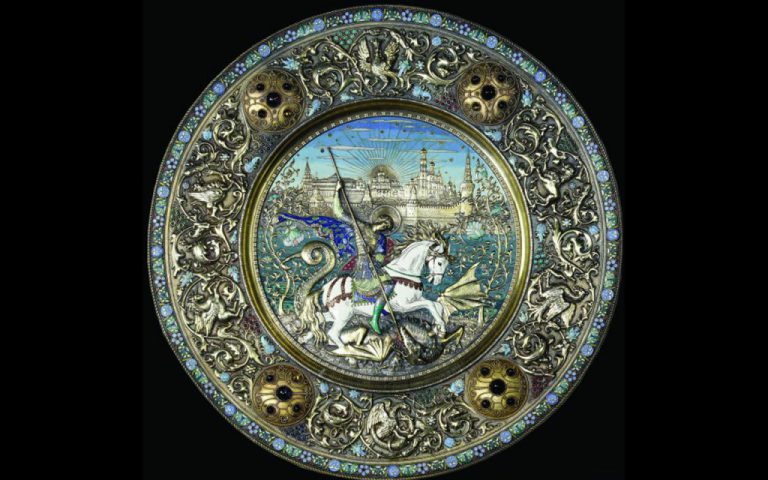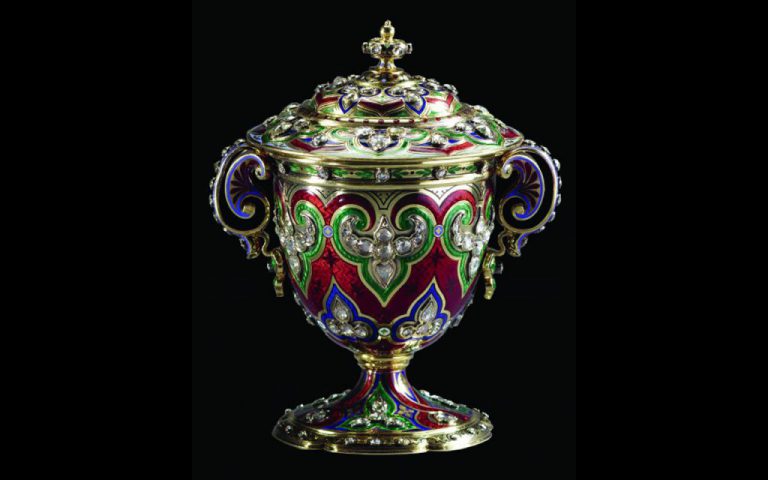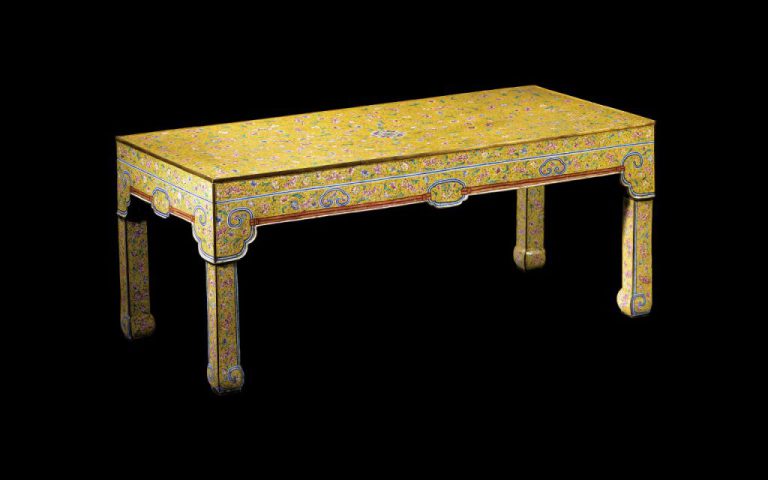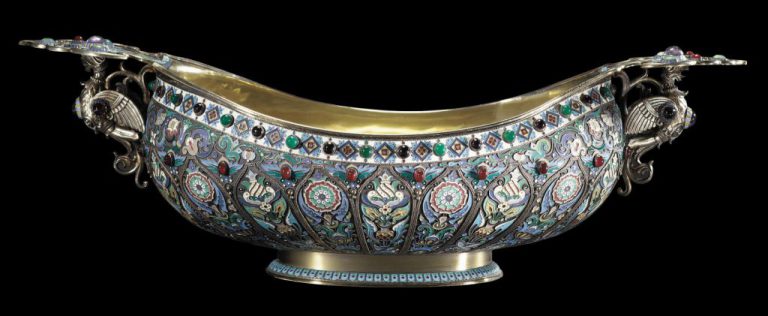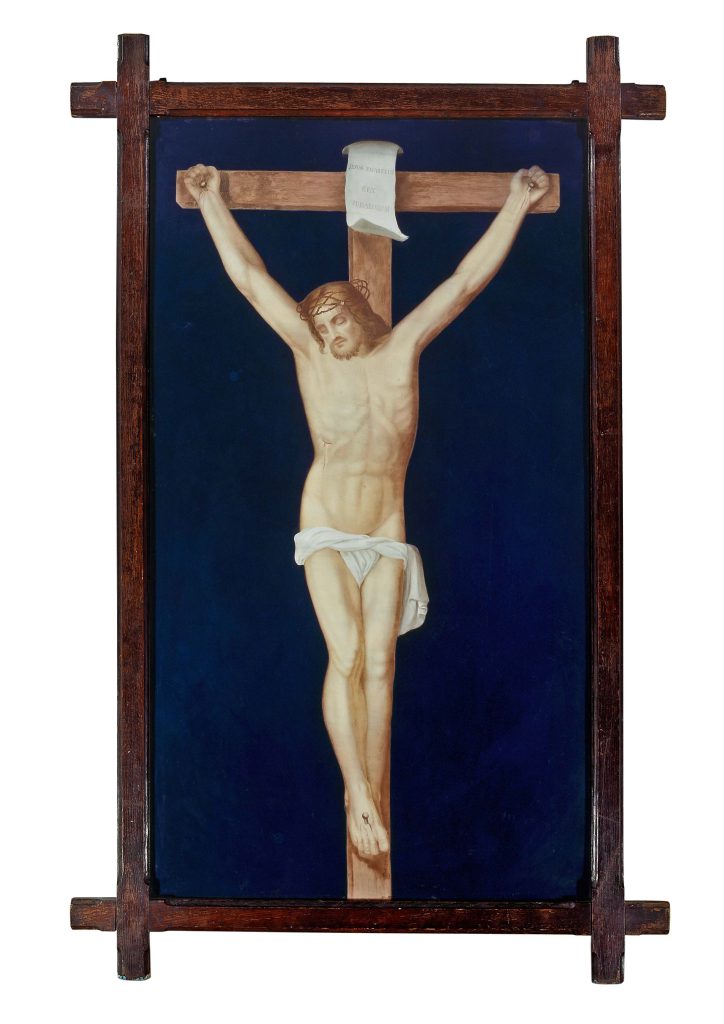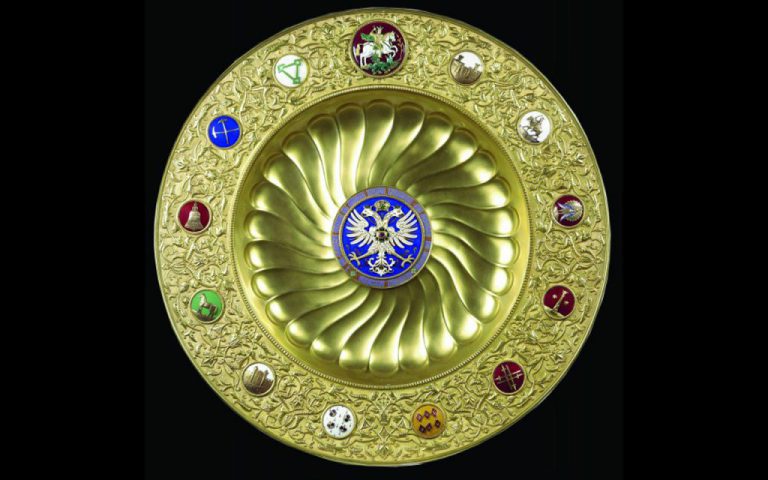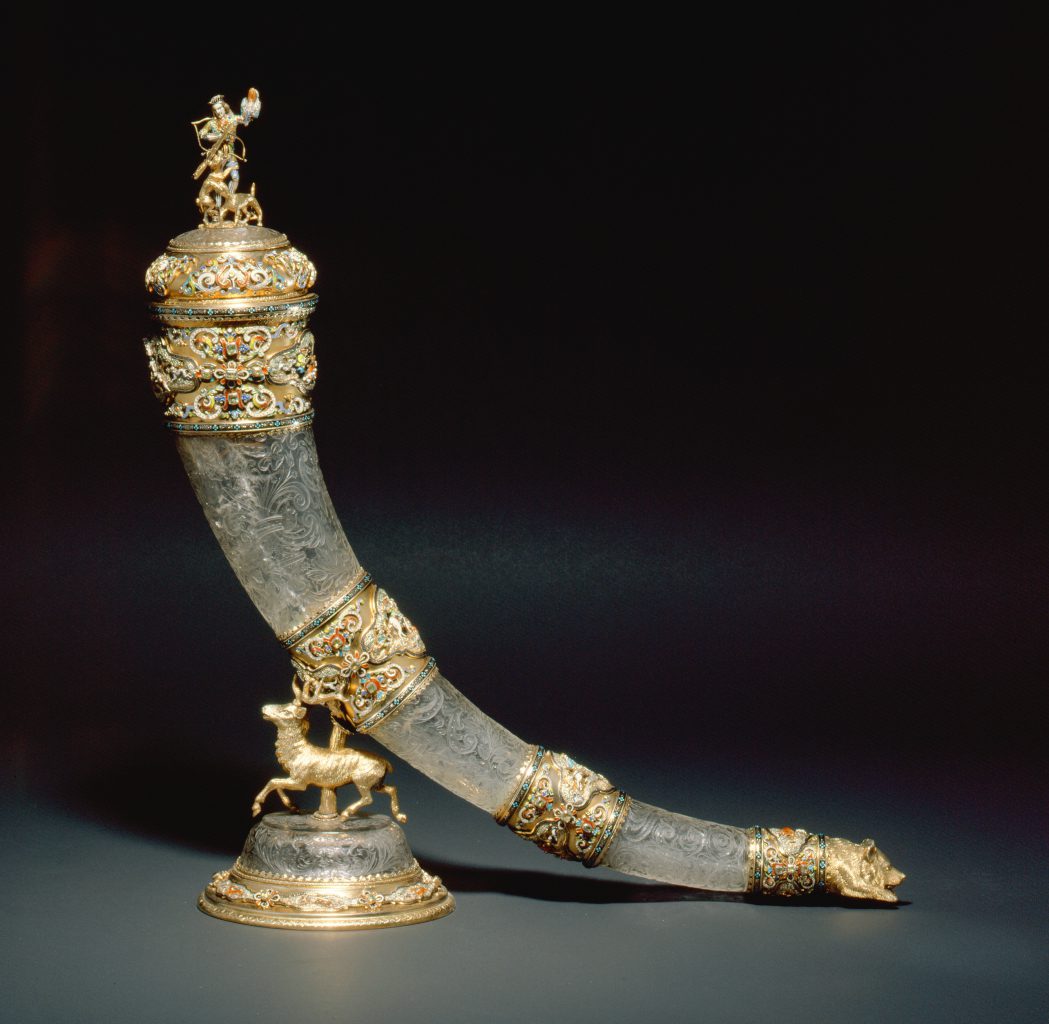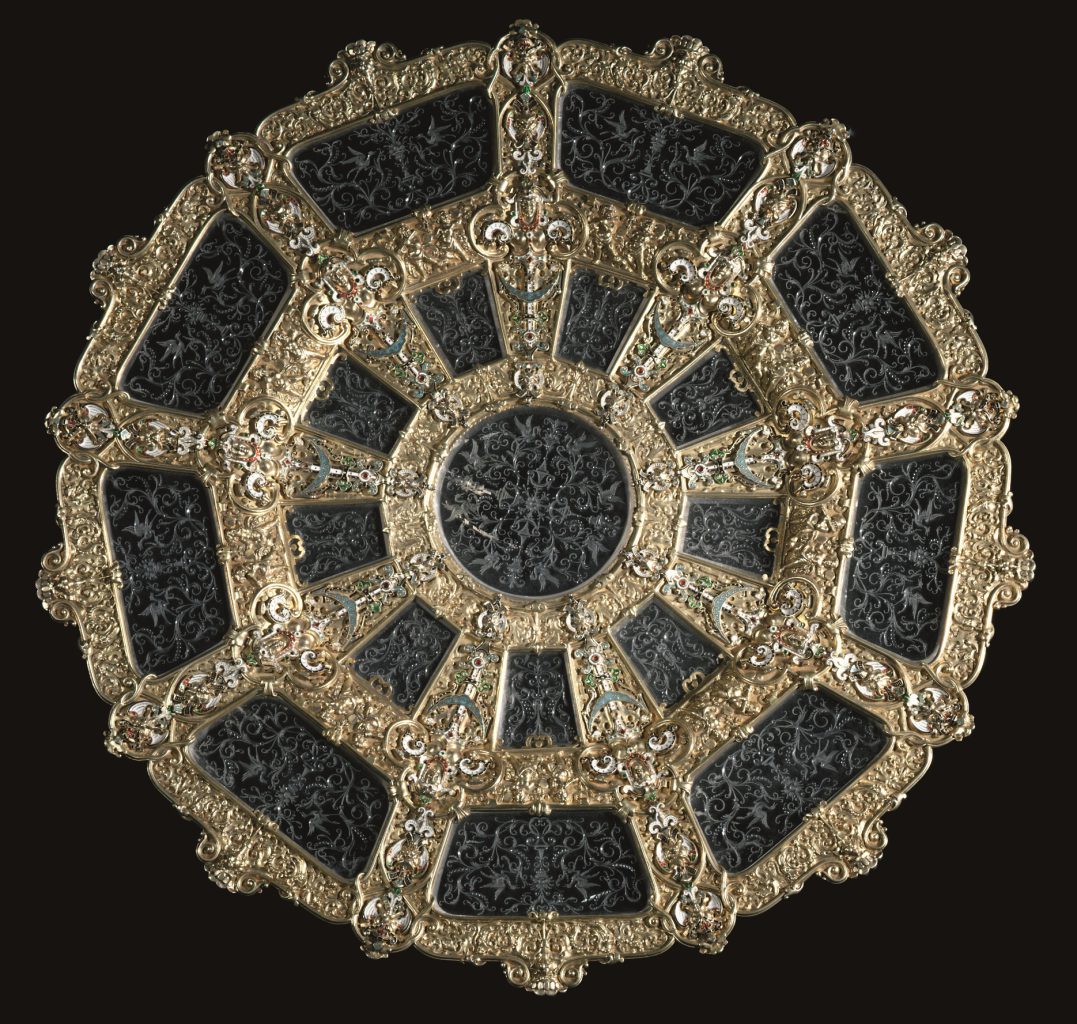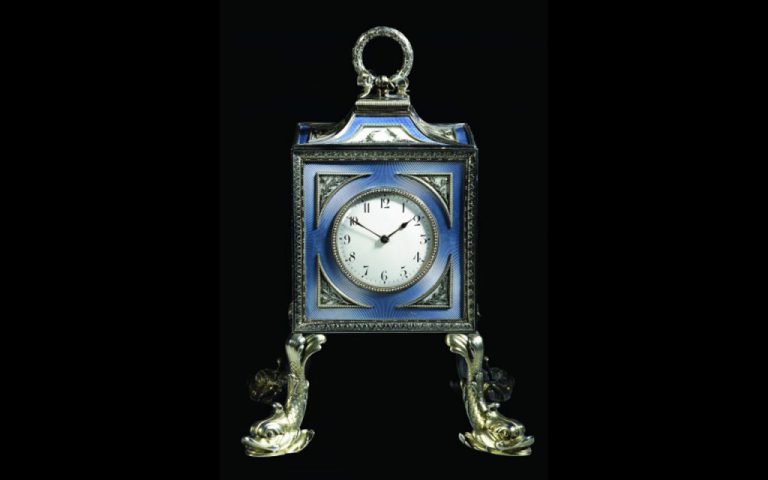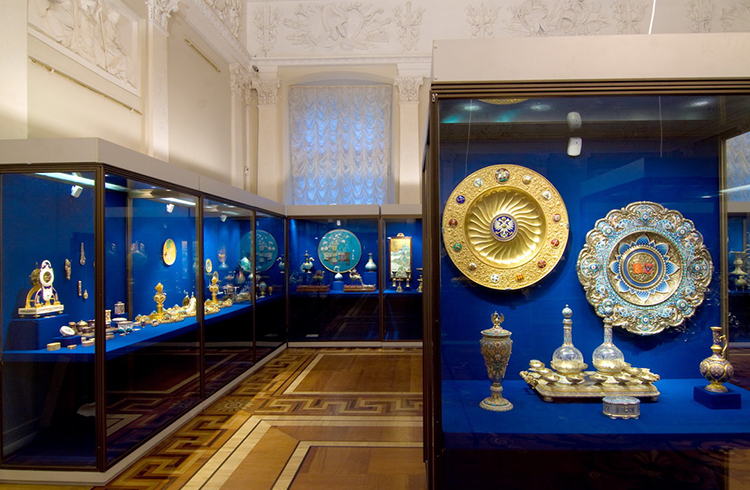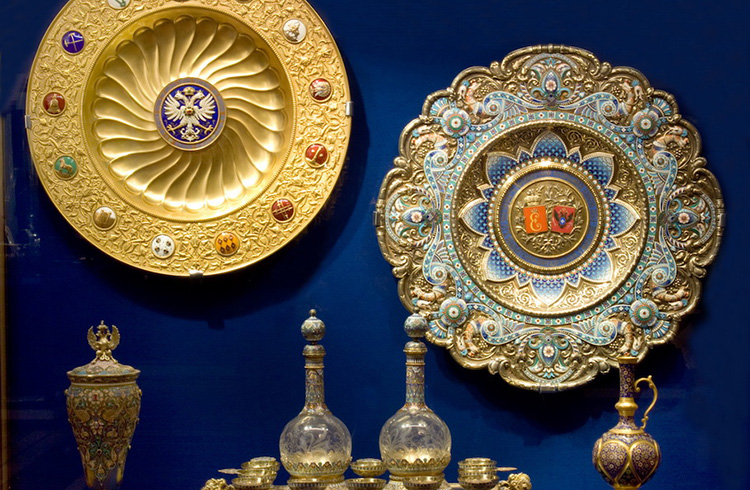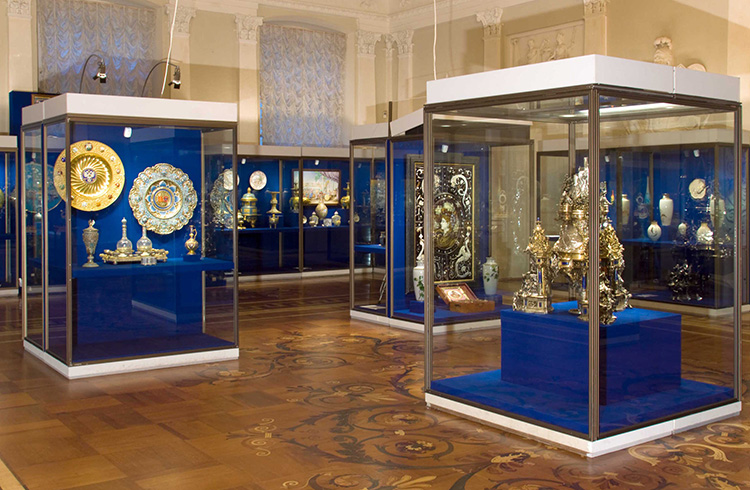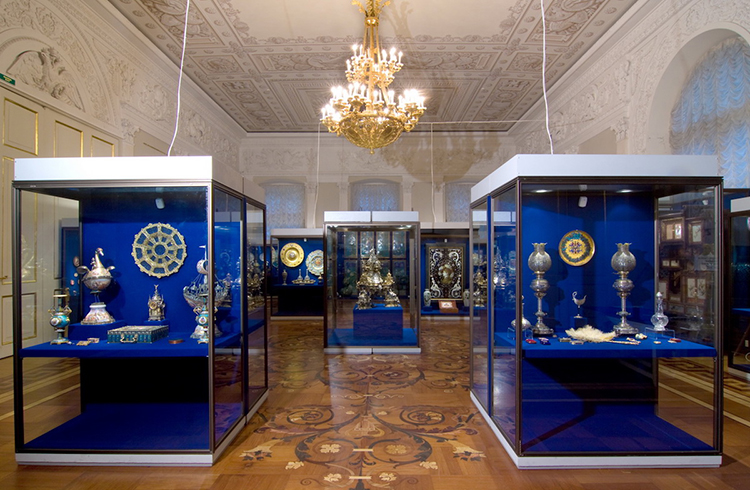-

Landau Carriage
height 208 cm, length 470 cm, width 175 cm
Bombay (Mumbai), India
-

Presentation Charger
diameter 74.2 cm
1899-1902 Russia, Moscow
-

Cup and Cover
height 15 cm
circa 1840 France, Paris
-

Throne Table
37 x 90.5 x 42 cm
1736-1795 China, Guangzhou (Canton)
-

Two-handled Kovsh
23.3 x 74 x 35 cm
before 1899 Russia, Moscow
-

THE WORLD’S LARGEST KNOWN LIMOGES ENAMELLED PLAQUE depicting crucifixion of Christ
Overall 199.5 x 127cm
Limoges, France
-

Bread and Salt Dish
diameter 62.8 cm
1882-83 Russia, Moscow
-

Cornucopia
height 50.2 cm
circa 1890 Austria, Vienna
-

Charger
diameter 50 cm
after 1886 Austria, Vienna
-

Timepiece
20 x 14.2 x 14.3 cm
1904-1908 Russia, St Petersburg
Enamels of the World (1700-2000)
The formation of the enamels collection was based upon an understanding of the significance of enamelling in global rather than parochial terms. With over 1,300 pieces, it seeks to explore this unique art form with a wider scope. As a subject of study, enamel has generally been examined with a particular focus – its history in a certain country or geographical zone, its flowering during a specific era, or as a technique – either in practical manuals or in scientific papers that seek to analyse in exacting technical terms what craftsmen in the past had achieved in an empirical, and perhaps haphazard, way. This collection provides the opportunity to compare enamelling between defined geographical areas. Although each location is examined in isolation, with reference to technique and style, it soon becomes evident that external influences are a constant element in the evolving story, and that the wider spectrum of the times is reflected in their detailed histories.


